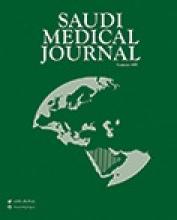No consensus is available on the definition of a “Mass Gathering”. Traditionally, a mass gathering event was defined as a group of more than 1,000 persons assembled at a particular location for a specific purpose and for a defined period of time. Nevertheless, most of the published literature reports larger events accounting for more than 25,000 participants.1,2 This definition is however limiting as it only considers the size of the crowd, which is but one descriptor of a varied gathering of human beings at a mass gathering event.3 Some authors define mass gatherings from a health prospective, considering a mass gathering event as a situation during which a large gathering of people occurs and results in limited access to patients, causing delayed public safety response to medical emergencies.2 The World Health Organization (WHO) definition also takes a broader view of mass gatherings to include the public health dimensions and defines mass gatherings as events attended by a sufficient number of people to potentially strain the public health resources of the community, city, or nation hosting the event.1
Mass gatherings can be either planned or spontaneous and recurrent or sporadic.4 Planned mass gatherings may include sporting, social, cultural, religious, and political events. Examples include: music festivals, the Olympic Games, and the Hajj.1 Spontaneous mass gatherings by their nature are more difficult to plan for and may include events, such as funerals of religious and political figures.1,4 Mass gatherings may also include the gatherings of displaced populations due to natural disasters, conflicts, and wars.4
Mass gatherings can pose several significant public health challenges to the health and security authorities both within the host country and abroad.1,4 They place additional pressures on health systems, which must operate for the duration of the mass gatherings stretched to surge capacity. They also require intersectoral approaches to risk mitigation and coordination and cooperation across multiple disciplines, agencies, sectors, and ministries. Risk communication is complex, especially for mass gatherings with international dimensions involving different languages and cultures. These factors in addition to the introduction of infectious and non-infectious public health threats to local, national, or international population during or after the events and the risk of deliberate action against mass gatherings, increase the likelihood of emergencies resulting in a significant number of casualties.4
On the other hand, mass gathering events can be a great prospect for a lasting health legacy through intense periods of exceptional focus and funding for sustainable improvements in health infrastructure and capacity, enhanced collaborations and synergies between stakeholders nationally and internationally, and major opportunities to obtain consensus for developing optimum recommendations for global health security.4,5 The wealth of knowledge and expertise generated from mass gatherings can drive best health promotion, education, and risk mitigation strategies and optimize the planning and delivery of effective health services during future mass gathering events. To minimize the negative impact and to capitalize on the potential benefits of hosting a mass gathering, effective planning and handling of health risks associated with the mass gathering are crucial.
“Mass Gatherings Medicine” is an area of medicine that deals with health aspects during mass gatherings including the health effects and risks of mass gatherings and strategies for effective health services delivery during these events. The concept of mass gatherings medicine and the practice of medicine in mass gatherings are not new, with numerous literature published in the last decades addressing the issue of medical care in mass gatherings.3 However, it was only at the 2010 “Global Forum on Mass Gathering Medicine”, hosted by Saudi Arabia and organized by the Saudi Ministry of Health and “The Lancet Infectious Diseases”, where the Jeddah declaration was adopted, which proposed the formalization and establishment of the new discipline of mass gatherings medicine.5 Therefore, moving the complex public health issues surrounding mass gatherings into an official scientific discipline that include several specialties. The formal discipline of mass gatherings medicine was launched at the World Health Assembly of Ministers of Health in Geneva in May 2014.5
However, the term mass gatherings “health” rather than “medicine”, maybe be more appropriate for this newly recognized discipline, since ensuring the wellbeing of people at mass gatherings requires a far greater range of activities than encompassed by the traditional concept of medicine.6 Mass gatherings health deals with the diverse health risks associated with mass gatherings including transmission of infectious disease, non-communicable disease, trauma and injuries (occupational or otherwise), environmental effects (such as, heat-related illnesses, dehydration, hypothermia), illnesses related to the use of drugs and alcohol and deliberate acts, such as terrorist attacks.4 Mass gatherings health is an emerging field with many areas of knowledge gaps that need to be explored and studied. Mass gatherings health research should be encouraged to advance the collective understanding in all areas of the discipline, as well as in formulating evidence-based, robust and effective public health policies, and interventions in the planning and management of mass gatherings. In addition, mass gatherings health as a discipline should be promoted, including its introduction into training and educational programs, to empower the next generation of experts in mass gatherings health. This is particularly important in Saudi Arabia given the crucial role the Kingdom played in the inception and formalization of this discipline and the country’s yearly hosting of the Hajj and Umrah global mass gatherings.
Footnotes
Disclosure. Authors have no conflict of interest, and the work was not supported or funded by any drug company.
- Copyright: © Saudi Medical Journal
This is an open-access article distributed under the terms of the Creative Commons Attribution-Noncommercial-Share Alike 3.0 Unported, which permits unrestricted use, distribution, and reproduction in any medium, provided the original work is properly cited.






